Top ten most venomous animals in the world
This world is full of dangerous and poisonous animals. Some of them are so venomous that they can kill a human within seconds. These creatures might seem lovely and adorable, but there is a rule that you must keep in mind “The more colorful the creature is, the more poisonous it will be”. Every year thousands of deaths are reported to due individuals being attacked by these animals.
The most horrifying thing is that these creatures are not just limited to the wild. Some of them might be present in your backyard. So it’s always important to stay informed and extra cautious whether you are travelling or waking in your back yard. Here is the list of world’s top ten deadliest animals.
10 - Puffer Fish
This animal is ranked tenth in this list. It is from the family of Tetraodontidae, also called Globe fish, Balloon Fish, Puffers. It has large spines that can only been seen when the fish is puffed up. This specie spends most of its life in fresh warm water and it rarely goes into cool water.

There are total 29 species of puffer fish. Southeast Asia is ranked top of the list as far as the variety of puffer fish is concerned where 25 species are found, three of its species are found in Central Africa and one in South America. This predator is slow and clumsy in swimming. Because of elasticity of their stomachs it ingest huge amount of water and some time air to turn themselves into a huge inedible ball that can make their size up to 3 ft (1 meter) . Some species also have spines on their skin that make them even more deadly.
Toxicity
Puffer fish contains a toxin called TTX also known as Tetrodotoxin. According to the Center for Disease Control and Prevention (CDC) 1.4 ounce of Tetrodotoxin in Puffer Fish can be lethal. Almost all parts of this fish are poisonous, with each part containing variable amount of poison. Toxin affects the nervous system in such a way that it deadens out tongue and lips resulting in dizziness, vomiting, rapid heart rate and muscle paralysis. A single puffer fish can kill 24 to 26 adults.
As Food
In Japan specialist chefs make soup (fugu) and shashmi fugu but still lot of patients are reported every year eating Puffer fish. Patient normally dies within 24 hours.
9 - Dart frog
It is very colorful and beautiful frog normally found in the Central or South America. It is form the family of Dendrobatidae that lives for at most 2 to 4 year. There are total 175 species found in Green, Red, Blue and Orange colors. It is found in the rainy forest, muddy places and humidity (80-90%).
Features
It uses its large tongue to attack and never misses a strike. It normally attacks in the day time. Ants, spiders, beetles, and small cricket are daily food. Golden Dart Frog is quite social lives in the group of 5 to 10 frogs.
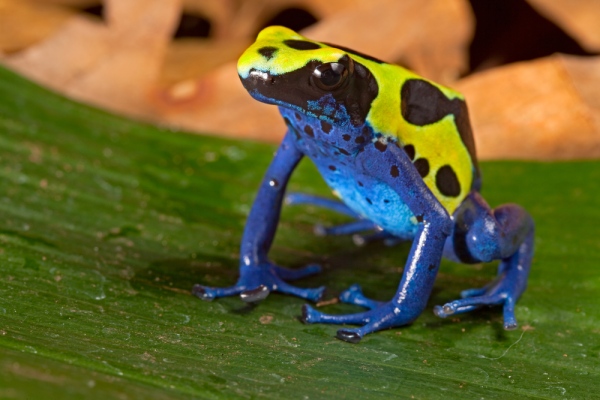
Toxicity
According to researchers tiny mites creates toxins in some of the Dart Frog of the Central and South America. Frogs don’t produce toxins themselves. More than 800 alkaloid compounds are present in the poison of Dart Frog. When eaten, a 5 cm Dart Frog can kill 10 adults and 2 microgram its toxin is enough to kill a human. Poison is hidden under the tongue and frog attacks when it feels any danger.
Only one species of snakes Leimadophis epinephelus has developed immunity against its poison. Among the poisonous species Golden Fort Frog (Arrow Frog) is the most poisonous and is found in Colombia.
Patient faces heart stimulation and muscles relaxation ultimately leading to cardiovascular collapse and respiratory paralysis.
8 - Inland Taipan
Next creature that is a part of our list is the Inland Taipan that is found in Queens land, South Australia and North territory border. It is considered to be most poisonous snake. It is known as Fierce Snake and belongs to the the Elapidae family. Interestingly it escapes in case of threat. Fierce name is famous because of its venom not its attitude.
Appearance
Its average length is 1.8 meters but also found in 2.5 meter. And because of its length and appearance it is also known as small scaled snake. Its skin color change with change in season. Dark marks at skin prevent it from heat.
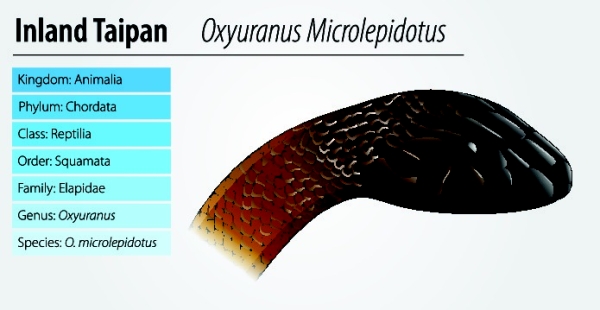
Toxicity
It delivers its poison deep into its prey and never misses its target. Its one single bite can kill 100 grown men. Its victim can die within a few minute. Fierce snake waits for its victim to die before it can start eating. Neurotoxin present in its venom can quickly paralyze a person. Vomiting, headache and pain in belly are the symptoms once venom is injected into the human body. Its venom also contains myotoxin that are known to eat muscles tissues. Urine of the patient turns reddish brown because broken muscle tissue pass into it. Internal bleeding may also be one of the symptoms. Birds, small mammals and native rats are the diet of this snake. In one single strike it can deliver seven venomous bites.
7 - The Brazilian Wandering Spider
Also known as armed spider, it is form Ctendiae family. There are total 8 species of this spider. Most venomous among them are P.Fera and P.negriventer. All of its species are found in Brazil but some of its species are found in Costa Rica, Latin America and Argentina.
Appearance
These spiders are 17 to 48 mm long. Phoneutria is the largest in this group. Brown is the common color in this specie. Their posture is quite intimidating and freighting to the predators. They lift their two legs up high giving a signal that they’re ready to attack.
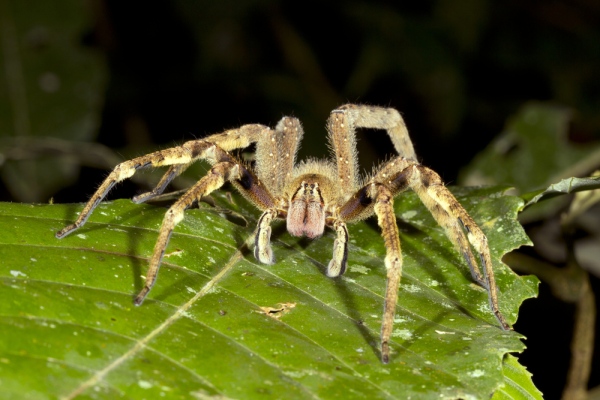
How it attacks
This spider wanders on the ground therefore is also called wandering spider. It normally attacks in the day time and catches its prey on the ground unlike most of the spiders that attacks in the bushes. They are also found under dried banana leaves. It is also found in the populated areas.
Toxicity
Their toxin and gestures make them aggressive. Its venoms contain toxins, proteins and peptides. Its effects our neuromuscular system results in paralysis, edema, throat inflammation and painful erection. This pain can last for hours and one should seek medical attention immediately.
6 - Stone fish
Don’t fall its beauty! It’s from the synanciiedae family. It’s found in the region of Indo Pacific, Florida Coast and in Caribbean. It’s known to be a marine fish rarely found in the rivers.
How it looks like
Stone fish is brownish in color and camouflage its body like a rock. Because of its appearance it becomes difficult for swimmers and its prey to find it.

Currently its two species are found: Reef Stonefish and Estuary Stonefish. Eyes of reef stonefish show deep depression whereas eyes of Estuary Stone fish are separated by a bony bridge. Its size is 30 cm. Its dorsal fin spines contain venomous glands that sting like needles. Its body is scale less and rough. In case of any threat its camouflage itself and waits for its victim to pass by and finally attacks with its stings at an incredible speed.
Poison
Most of the deaths occur because human steps on it and it inject its venom into the human body. Stone fish can stay out of water for almost 24 hours so you have to be extra careful while walking on the beach. Australian stone fish can cause death if not treated immediately. Its poison can kill a man in two hour and it affects almost all parts of the body.
Some of the symptoms are discussed below:
- Patent face and difficulty in breathing.
- Its effects our nervous system, which results in paralysis, fever, fainting and seizures.
- Severe pain in the skin that can results in bleeding
- Vomiting and nausea are also common.
5 - Scorpion the death strike
It’s deadly but its appearance is delicate. It’s from Buthidae family. It is normally found in the deserts however it’s found in a number of countries where 2000 of its species are found. Egypt, Mali, Sudan, Oman, Lebanon, Somalia, Pakistan, Iran, Qatar, Isreal and other countries of the Middle East are common where this scorpion is commonly found.
Body Appearance
Its length is 3.5 to 4.5 inches with a life span of 5 years. Scorpion is highly aggressive in nature. It has eight legs, two pediplaps and a tail which contains venom. The smaller a scorpion the more deadly poison it produces. Its color depends on its specie normally dark yellow color is quite common.
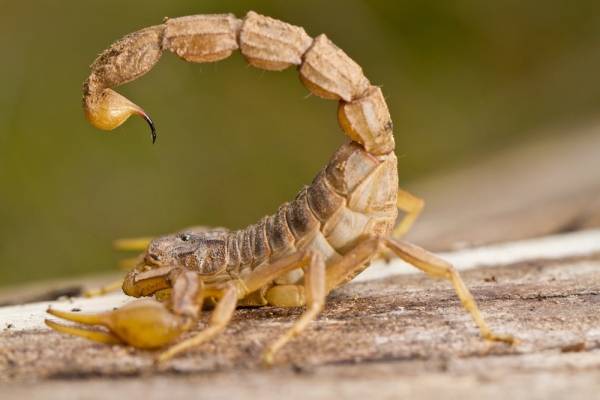
Venom
Its venom contains lethal neurotoxins. The low dose of poison causes unbearable pain that will not kill an adult human as long as he gets proper treatment on time. But children are at more risk. It can kill its prey like birds and lizards in seconds. If a human gets injected with its venom it’s important to get treatment immediately or it can cause death within 12 hours. If the victim doesn’t get treatment, the pain will travel through whole body from effected area and will eventually result in fever and muscles spams. All these symptoms will lead to death.
4 - Blue ringed Octopus
It’s small but deadly. Its size is same as that of a golf ball but is ranked fourth in our list of the world’s most venomous animals. It’s from the octopodiade family. Tide pools and coral reefs are the home of ringed octopus. It’s found in the Indian and Pacific Ocean and in japan and Australia.
Appearance
It’s of yellow color with blue and black rings. When it feels any threat the brown patches get darker. Its can get itself smaller to fit itself in the crevices. If blue ringed octopus loses any one of its arms, it can re-grow it within a period of six weeks. Its size is 12 to 20 cm. Its poison can kill 20 humans within a few minute.
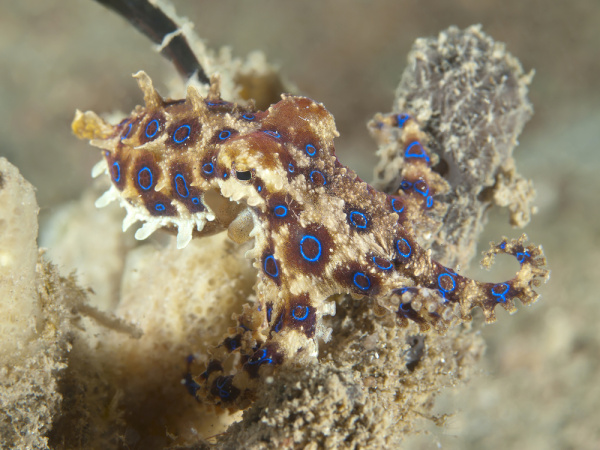
Toxicity
Tetrodotoxin, taurine, tryptamine are the contents of its venom. Tetroxdian paralyze our body and damage the respiratory. Bacteria and glands of the octopus produce this toxin. Its venom can also cause blindness. Brain gets low level of oxygen that ultimately leads to death.
3- The cone snail
This beautiful creature lives in warm water. Don’t become its victim if you find it somewhere. It’s found in Indian Ocean, Madagascar, Bay of Bengal, Pacific Ocean of Fuji and Marshall Island. It’s also known as conus marmoreus. Its size is 15 mm to 30 m. Its color is black, with orange and white dots on it.
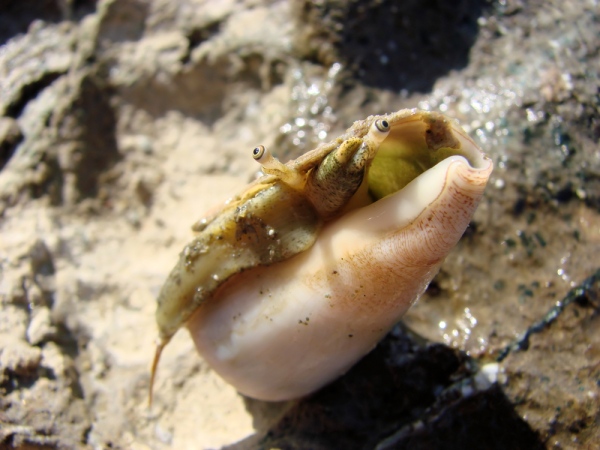
Toxicity
Its venom is so toxic that it can kill 20 human. Its poison reacts quickly and results in severe pain, blindness and numbness. Anti venom still don’t exist. So the key is to keep human alive until the poison tears off. Cone snail venom contains proteins that can be used in pain killing drugs.
2 - The king cobra
It is a king and its world largest venoms snake with length of 18.5 to 18.8 ft. It chiefly hunts other snakes but interestingly avoids coming into contact with humans. It’s found in South Asia. Body
Appearance
When it wants to attack it raises one third of it body. Its produces bone chilling and ironic hoods sounds to tell its preys or predators that “I am ready to attack”. Its lives in rainy forest, comfortable at trees, on land and may be in water. It eats other snakes mammals.
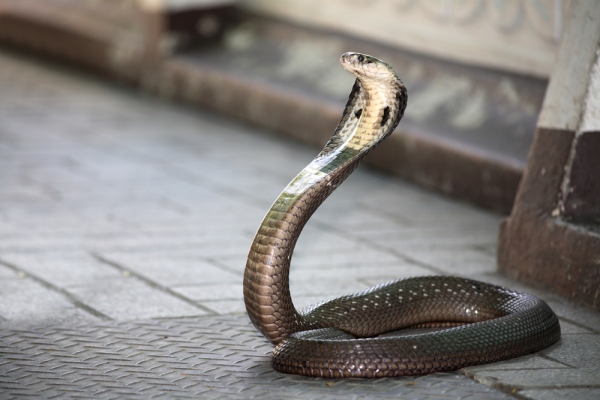
Why it is called the king
Its venom of one single bite contains two tenth of a fluid ounce enough to kill 20 human.
1 - The Box jelly Fish
Last but not the least here comes the predator which tops the list. It’s the Box Jelly fish. More than 5000 deaths are recorded since 1957 due to this jelly fish. It’s found in the deep water of Asia and Australia. Its sting is so painful that the victim need to be treated immediately or it’s a rare chance of survival.
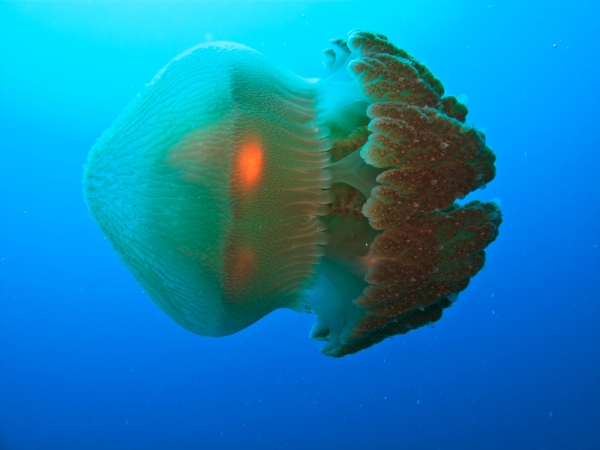
Appearance
Marine stringer looks like umbrella. Its umbrella helps it to move quickly. It swims with the speed of six meter per minute. Box jelly fish nervous system is more developed than other jelly fishes. Their eye contains complete lenses, retinas and corneas. Interesting thing is they have limited memory ability to learn the things. Sea turtles remain unaffected from its poison.
| Written by: | Michal Vilímovský (EN) |
|---|---|
| Education: | Physician |
| Published: | April 5, 2014 at 6:06 AM |
| Next scheduled update: | April 5, 2016 at 6:06 AM |
Get more articles like this in your inbox
Sign up for our daily mail and get the best evidence based health, nutrition and beauty articles on the web.

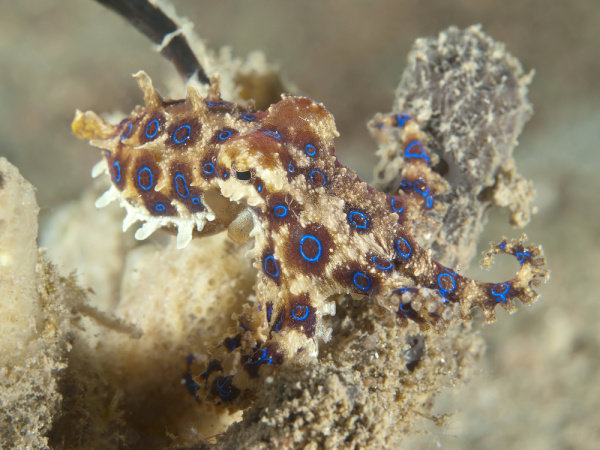
Ache in left arm that you should not ignore
Alkaline water dangers: why you should not drink it
How to Avoid Sleepiness While Studying?
23 Foods That Increase Leptin Sensitivity
Low dopamine (e.g. dopamine deficiency): causes, symptoms, diagnosis and treatment options
Swollen taste buds: the ultimate guide to causes, symptoms and treatment
Thin endometrial lining: causes, symptoms, diagnosis and treatment
Pimples inside nose: the complete guide
Holes in tonsils: definition, symptoms, treatment and prevention
How to deal with an ingrown hair cyst
Allegra vs. Zyrtec vs. Claritin
Allergy to penicillin and alternative antibiotics
How to get rid of phlegm (excessive mucus) in throat? Detailed guide to medical and home remedies, symptoms and causes
What causes stomach ache after meals?
Liver blood test results explained